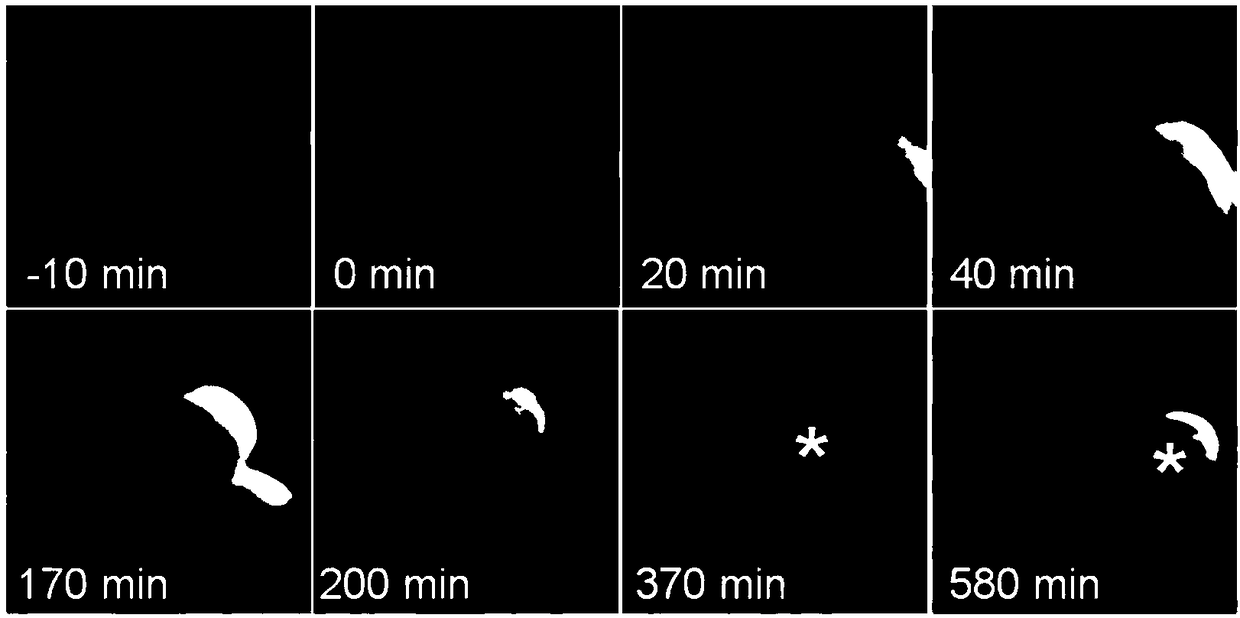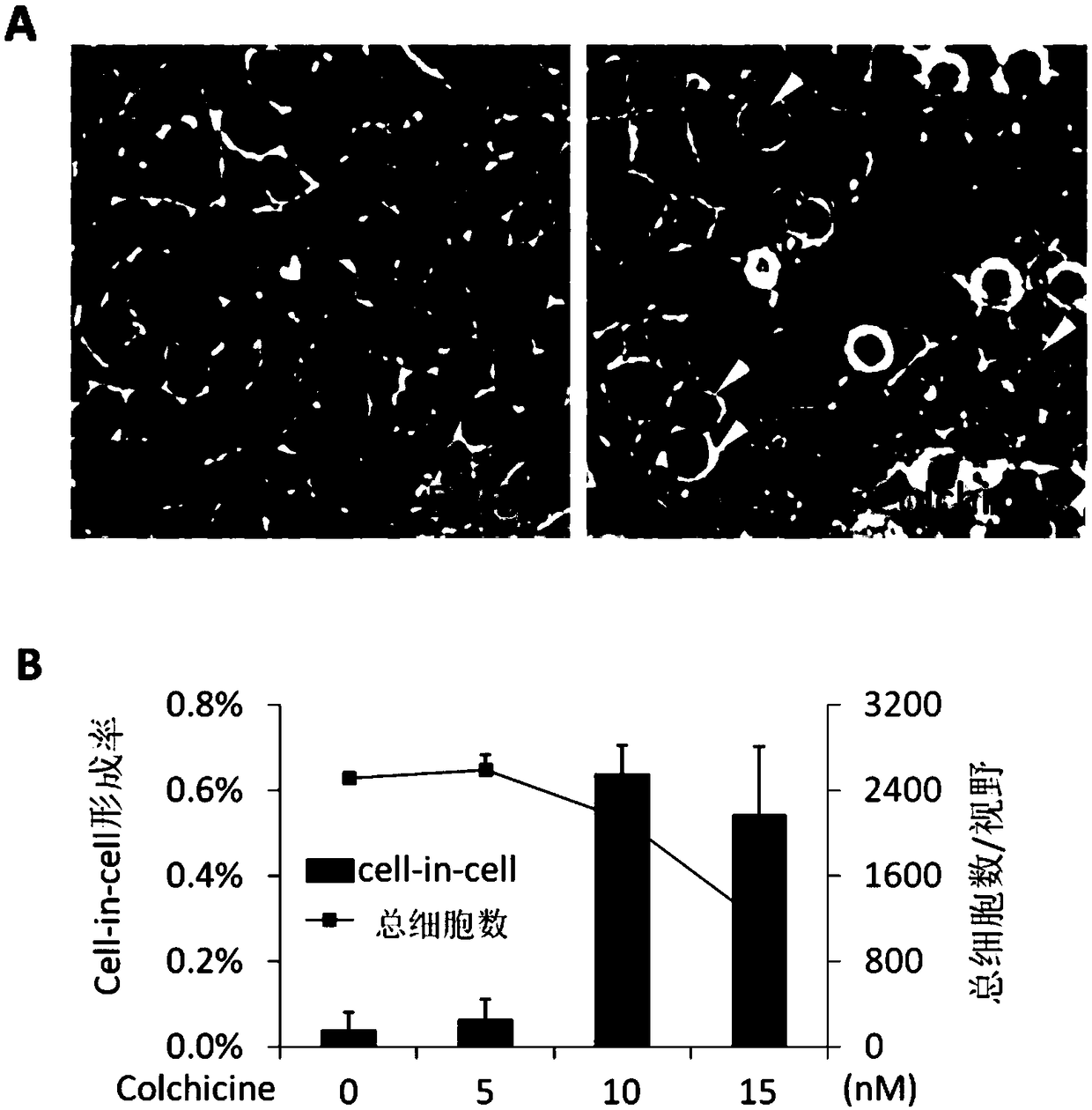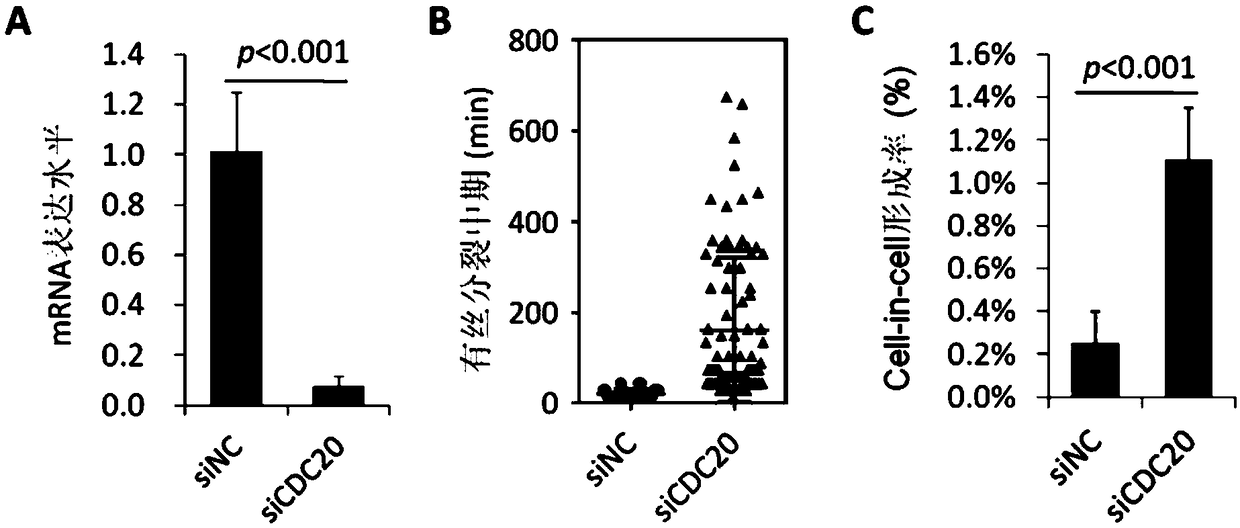Cell telescoping structure model induced through mitosis retarding and preparation method thereof
A cell model, mitotic technology, applied in the fields of biochemical equipment and methods, analytical materials, and microbial determination/inspection, which can solve problems such as rare, difficult to obtain cell-in-cell structure, etc.
- Summary
- Abstract
- Description
- Claims
- Application Information
AI Technical Summary
Problems solved by technology
Method used
Image
Examples
Embodiment 1
[0041] Embodiment 1, establishment of MCF10A / H2B-mCherry stable cell line
[0042] 1. Cell laying
[0043] Firstly, 293FT cells were mixed with 1×10 per well 6 The density of each cell was evenly spread on a six-well plate pre-embedded with collagen (collagen I), and the medium DMEM (containing 10% FBS, % indicates volume percentage) was filled to 2 mL, and cultured in an incubator for 16 hours. Transfection experiments;
[0044] 2. Retroviral packaging system
[0045] Solution A: Mix 0.4μg target plasmid pBabe-H2B-mCherry, 0.2μg pCMV-VSV-G plasmid, 0.25μg gag / pol plasmid with 100μL Opti-MEM, and let stand at room temperature for 5min; Lipofectamine 2000 was mixed by inverting gently. Dilute 2.5 μL Lipofectamine 2000 into 100 μL Opti-MEM, mix by inverting gently, and let it stand at room temperature for 5 minutes. Leave it for 20-30 minutes; mix 800 μL Opti-MEM with 200 μL solution C to obtain transfection mixture D.
[0046] 3. Packaging of retroviruses
[0047] Discard...
Embodiment 2
[0054] Embodiment 2, the statistical method of cell-in-cell formation rate
[0055] Cell-in-cell structure such as figure 1 As shown, the red fluorescent H2B-mCherry marks the nucleus, and the cell-in-cell formation process is tracked by the live cell workstation time-lapse, and the yellow * indicates the internal cells of the cell-in-cell structure. figure 1 Schematic diagram of Time-lapse for the formation of cell-in-cell structures induced by targeted arrest of mitotic metaphase. In a specific embodiment, the total number of cells in the shooting field of view is counted using the NIS-Elements system supporting the Nikon microscope, and the number of cells is identified according to the H2B-mCherry labeled nucleus; the structure of the internal cells completely wrapped by the target cells (ie external cells) is recorded as 1 cell-in-cell structure. cell-in-cell (%)=number of cell-in-cells / total number of cells×100 mean±SD.
Embodiment 3
[0056] Example 3, colchicine induces cell-in-cell structure formation
[0057] Inoculate the stable cell line MCF10A / H2B-mCherry prepared in Example 1 with a good culture state and a confluence of more than 80% into a 12-well glass bottom cell culture plate at a cell density of 1×10 5 / hole. After the cells adhered to the wall, the medium containing colchicine, a mitosis inhibitor, was replaced, and the following concentration gradients of 0 nM, 5 nM, 10 nM and 15 nM were set. Colchicine was treated for 3 days, and the medium was changed every day. After 3 days of drug treatment, discard the medium carefully, add 1ml 1×PBS to wash twice, fix with 4% paraformaldehyde, discard the fixative after 10min, add PBS to wash twice, and finally add DAPI dropwise to seal the slide. Cell morphology and cell-in-cell formation were observed under a Nikon inverted fluorescence microscope, and photographed and recorded. Set up a 10× objective lens, two-channel shooting: mCherry and DIC, ra...
PUM
 Login to View More
Login to View More Abstract
Description
Claims
Application Information
 Login to View More
Login to View More - R&D
- Intellectual Property
- Life Sciences
- Materials
- Tech Scout
- Unparalleled Data Quality
- Higher Quality Content
- 60% Fewer Hallucinations
Browse by: Latest US Patents, China's latest patents, Technical Efficacy Thesaurus, Application Domain, Technology Topic, Popular Technical Reports.
© 2025 PatSnap. All rights reserved.Legal|Privacy policy|Modern Slavery Act Transparency Statement|Sitemap|About US| Contact US: help@patsnap.com



